 FIND A HOME
FIND A HOME
Content provided by Guided Solutions
By incorporating sustainable practices into our daily lives, we can make a huge impact. Here are ten examples of ways to be sustainable in everyday life:
- Reduce your energy consumption by turning off lights and appliances when not in use and keeping your home well-insulated.
- Reduce your water consumption by taking shorter showers, fixing leaks, harvesting rainwater, and using water-efficient appliances.
- Recycle and compost to reduce waste and conserve resources.
- Use reusable bags, bottles, and containers to cut the need for single-use plastics.
- Switch to a plant-based diet, as meat and dairy production generates tons of greenhouse gases.
- Support sustainable businesses by purchasing products made from sustainable materials and produced by companies that prioritize sustainability.
- Use public transportation to reduce carbon emissions.
- Plant native trees and gardens and support reforestation projects to help reduce carbon emissions, increase biodiversity, and improve air quality.
- Support community-based efforts that promote sustainable living, such as community gardens and renewable energy projects.
- Encourage your friends and family to adopt sustainable practices in their own lives.
Finding A Sustainable Balance
We’re all about making good choices for both the environment and ourselves — like reducing our carbon footprint, cutting waste, supporting sustainable businesses, and being mindful of how our actions impact the planet.
When you’re ready for home insurance, let us know. By doing the comparison shopping for you, Guided Solutions is helping you reduce your carbon footprint, too!
Guided Solutions’ parent company, Baldwin Risk Partners, is a partner on this project by Tavistock Development Company.
Content provided by Guided Solutions
Living sustainably is sometimes perceived as an alternative lifestyle, and in a way, it is. Over the last 200+ years, we’ve grown comfortable creating, consuming, and disposing of things at a remarkable rate. These choices have brought on many serious challenges, including climate change, loss of biodiversity, and the depletion of Earth’s natural resources. Living sustainably is about making conscious choices that collectively have a positive impact on everyone and everything.
Preserving the planet
The biggest motivation to live sustainably is, undoubtedly, life itself. As our population grows, the demand for fresh food, clean water, and reliable energy grows with it. If we exhaust these resources, we’ll end up irreversibly damaging the planet and all that live here.
Combatting climate change
Sustainable living also helps slow down the speed of climate change. All those greenhouse gases in the atmosphere are causing the Earth’s temperature to rise and introducing extreme weather events — like melting icecaps, droughts in the western US, floods and crop freezes down south, and extreme blizzards up north.
Social and economic well-being
Sustainability can also bring benefits such as job creation, innovation, and economic growth. For example, demanding renewable energy sources can help to create jobs in the clean energy sector and help to limit dependence on fossil fuels.
When you’re ready for home insurance, let us know. By doing the comparison shopping for you, Guided Solutions is helping you reduce your carbon footprint, too!
Guided Solutions’ parent company, Baldwin Risk Partners, is a partner on this project by Tavistock Development Company.
Content provided by Guided Solutions
Sustainability is a key concept in today’s world as we strive to preserve the planet for future generations. It’s about making choices that minimize our impact on the environment, from reducing energy consumption and waste to choosing products made from sustainable materials and supporting businesses that prioritize sustainability.
Sustainable living requires reducing our carbon footprint
One of the core principles of living sustainably is having a smaller carbon footprint — the total amount of greenhouse gases like carbon dioxide we emit into the atmosphere due to how we live. You don’t have to take drastic measures to reduce your carbon footprint.
It’s not just about being environmentally friendly — although that’s a big part. It’s about using resources responsibly and efficiently so they will forever be available. That could mean opting for an electric vehicle, switching to energy-efficient appliances and light bulbs, or biking to do local errands rather than taking the car.
Sustainable living requires being intentional about the products we use
We can also adopt recycling and composting and be mindful of how much we rely on single-use plastics.
Renovating a kitchen or bath? Ask your contractors if they’re using sustainable materials and hold yourself to a higher standard when it comes to water usage and heating and cooling your home.
When you’re ready for home insurance, let us know. By doing the comparison shopping for you, Guided Solutions is helping you reduce your carbon footprint, too!
Guided Solutions’ parent company, Baldwin Risk Partners, is a partner of Tavistock Development Company.
We’re halfway through Florida’s hurricane season, so storm preparation should still be top of mind as we weather the remaining summer and early fall months. It’s likely you’ve noticed which communities fare better during storms than others — some neighborhoods are more prone to flooding, infrastructure damage and interruptions, and structural issues during inclement weather. Here at Sunbridge, we’re built to last!
Master-planned communities generally don’t see the kind of damage experienced elsewhere, and for good reason! Enhanced infrastructure and stormwater management, natural buffers and integrated green spaces, and modern building codes all play a part in keeping our shared spaces beautiful. Here’s why.
Long-Term Vision
Master planned communities (MPCs) are designed to last. Our planners took into account landscape features like floodplains, elevation and drainage patterns to minimize the impact of natural weather phenomena. Because of this, land development engineers designed our infrastructure systems to higher standards. Roads, bridges and utility systems were designed more effectively, reducing the risk of damage and facilitating effective recovery.
Smart Community Design
When Tavistock considered where to place certain aspects of MPCs, they prioritized green spaces, parks and natural buffers to weather, which can help absorb excess water during heavy rain and act as windbreaks. Large retention ponds efficiently collect rainwater, and electrical lines are placed underground, so even in the heaviest winds, the power stays on so your fridge stays fresh! Landscaping features can also minimize erosion and enhance water management (including our use of native plants!).
Better Building Standards
MPCs tend to be held to higher building standards and the most up-to-date building codes compared to older developments. These codes require construction that can withstand a range of weather conditions, including hurricanes and flooding, which our neck of the woods is known for experiencing. Reinforced roofing, impact-resistant windows and stronger foundations are all part of these efforts.
Community Communication
In a tight-knit community like Sunbridge, there’s direct and multi-channel communication between residents and community leaders. Active HOAs promote community-wide preparedness efforts and education, and are able to make residents aware of potential risks and evacuation routes quickly and effectively through email, text and other channels. In Sunbridge, we prioritize resident safety and know how important it is to keep you in the loop!
While no community is immune to the effects of bad weather like hurricanes, MPCs like Sunbridge are designed with these events in mind, making the risks of damage lower and resilience more effective when interruptions do happen.
Have you ever noticed how being outside in nature makes you feel better? There’s a reason for that. Being in green spaces actually changes our DNA to make our bodies healthier and — amazingly — younger. A new study found that people who live near and spend time in green spaces could add about 2.5 years to their lives.
The reason for this is the difference between our biological age and our chronological age. Yes, we have two ages. Chronological age is the number we celebrate on our birthdays. Whereas, your biological age can be made older or younger by your lifestyle choices: where and how you live, your diet and exercise habits, and other healthy choices we make.
Risks for age-related health conditions like cancer, cardiovascular disease and Alzheimer’s increase if a person’s biological age is higher than their chronological age. Being in nature actually makes us younger, slowing down the aging process in our DNA and lowering our biological age.
“The research should encourage people to think more about their surroundings when making healthy living decisions,” said Lifang Hou, a preventive medicine professor at Northwestern University’s Feinberg School of Medicine and the study’s principal investigator. It should also serve as motivation to incorporate nature into people’s daily lives, according to another researcher, environmental epidemiologist Peter James. He says that this research shows that nature is something human beings need to be healthy.
One of Sunbridge’s main missions is to build a community focused on giving residents more opportunities to enjoy nature and the outdoors. Between our weekly outdoor events, our miles of hiking and biking trails and community green spaces for family and friends to gather, Subridge has nature in its DNA so you will, too!
Source: Washington Post
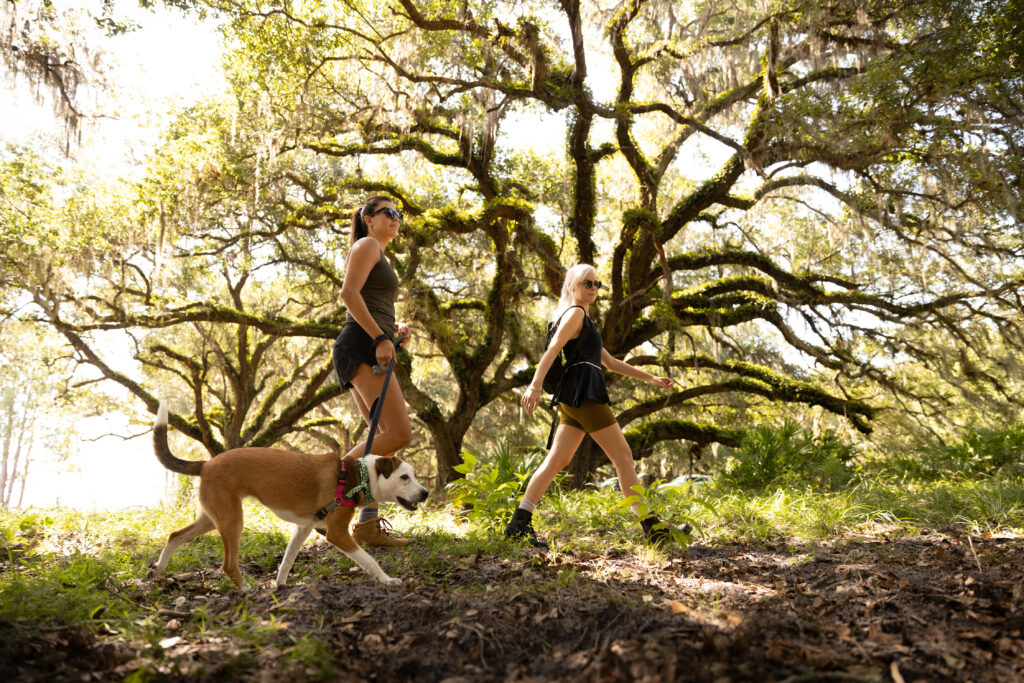
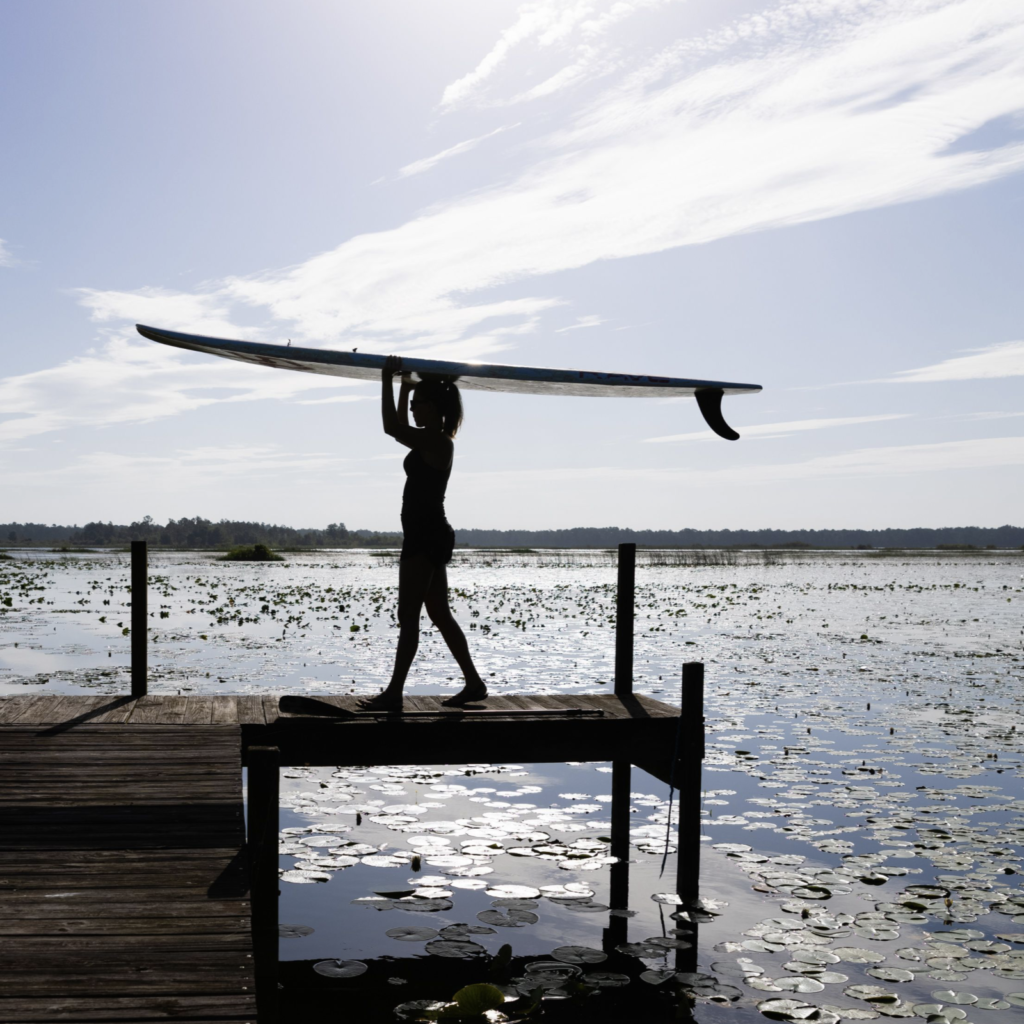
Back-to-school time is right around the corner, and while you’re checking off the supplies list and picking out a new backpack, it’s worth giving some thought about ways to incorporate environmentally conscious practices into the new school year.
Small changes can make a big impact, and a new school year is a great time to incorporate updates to our routines that can contribute to a healthier planet. From reducing our carbon footprint in the ways we get to and from school, to the supplies we choose to purchase and use, here are a few planet-friendly back-to-school ideas.
Green Your Transportation: Depending where you live, there are a few options to help lower your commute’s carbon footprint. If you’re close to school, consider having your students walk or bike this year. Remember to do a few practice runs with your child, doubling down on safety and making sure they know the route well before doing it on their own. If walking or biking isn’t an option, consider carpooling with other families to reduce the number of cars on the road.
Upcycle Supplies: Picking out all new supplies is part of the back-to-school fun, but consider taking stock of what you have left over from last year before rushing out to buy more. Repurpose notebooks and folders by decorating the front with fun stickers, wash and refurbish backpacks to make them look like new, or add a few colorful patches that reflect your student’s personality or past happy memories.
Opt for a Sustainable Lunchtime: Reusable lunch boxes and water bottles are a must for any student, but look for ones made from eco-friendly materials like stainless steel, bamboo or recycled plastics. For water bottles, choose one that’s BPA-free and can be repeatedly refilled throughout the day and will last all year long. Also, consider reusable snack and sandwich bags made from silicone instead of single-use plastic zip-top bags.
Use School Recycling Programs: If your school doesn’t have a strong recycling program already, encourage them to adopt one, and teach your students about the benefits of recycling and how to do it properly. Educating students about the environmental impact of recycling will help them think long-term about their effect on the planet and can make lifestyle changes that will last long after the school year is over.
In Sunbridge, we’re committed to helping our residents live more eco-friendly lives, including the students who live in our naturehood. We’re looking forward to the 2024-25 school year when the Weslyn Park K-8 school opens and our students can enjoy an easy, eco-friendly commute to a school right in their backyard!
Together, we can create a school environment that fosters academic excellence and teaches our students to be good stewards of the environment.
One great thing about Floridians: When it’s hot, we have lots of ways to stay cool.
In Sunbridge, we’re always looking for ways to help our residents enjoy the outdoors while lowering our footprint on the planet. After all, to be good stewards of our lands means to preserve their natural beauty as much as possible.
Here are some tips on how to stay cool in our summer heat while being mindful of our planet at the same time.
🏡 Go au naturel with your ventilation: Harness nature’s breezes by opening windows and using fans strategically. Cross-ventilation naturally cools your space without energy-intensive cooling systems.
🔄 Check your ceiling fans’ direction: Ensure your ceiling fans are rotating counterclockwise, which pushes cool air down. Remember to turn fans off when you leave a room to save energy.
🛀 Take refreshing cool baths and showers: Opt for a cool shower instead of a hot one, which both lowers your body temperature and saves energy.
💦 Choose eco-friendly water play: Consider sprinklers with adjustable flow settings or sprinklers where the water recirculates during use.
🌦️ Reconsider your watering schedule: With our consistent afternoon Florida rains, consider adjusting your lawn irrigation schedule to conserve water.
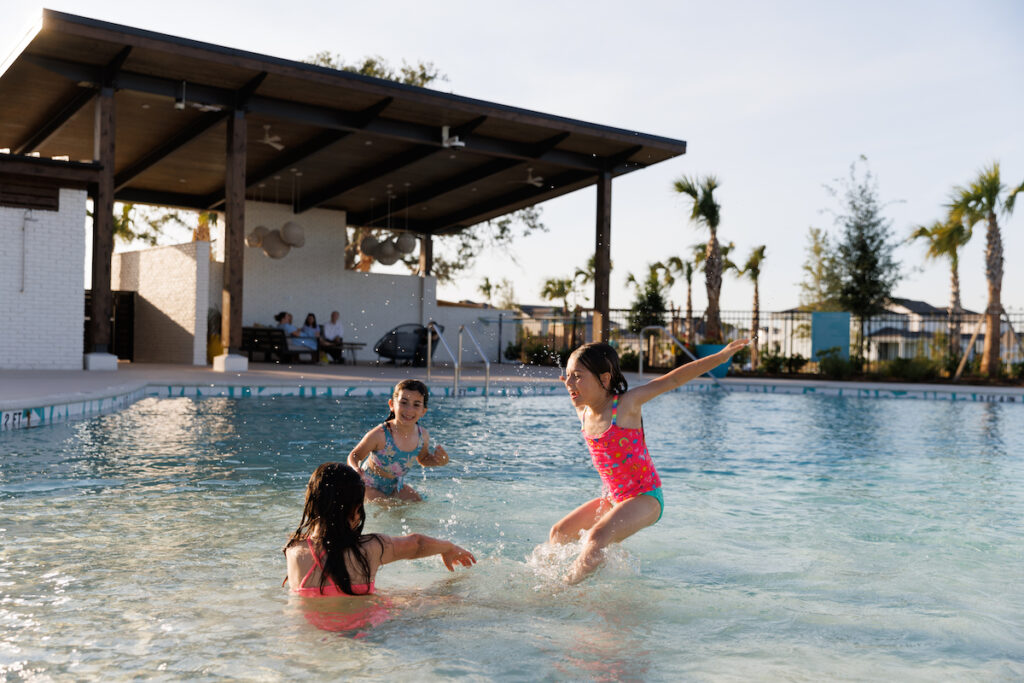
ST. CLOUD, Fla. – University of Florida landscaping research is helping to save water, money, and the changing climate.
“I’ve been gardening my whole life, since I was a pre-teen with my grandparents,” Brooke Moffis said.
That’s why Moffis said she decided to make gardening a career.
She works as a UF Institute of Food and Agriculture Sciences extension agent in Lake County.
News 6 spoke to her as he examined her “laboratory” near St. Cloud, where she and other UF researchers are helping to cultivate landscaping that is beautiful and relies mostly on rainwater.
“I’m checking to see how dense the soil is,” she said. “We call it bulk density — how compact it is.” Moffis is quick to point out this landscaping is not new. The plants are actually native to Central Florida.
“One of my favorites is the Starry Rosinweed that we see over that we see over here,” she said. “That’s what that yellow flowers are. They bloom heavily.” She said they attract birds, bees and other native insects. “The Firebush is great for attracting hummingbirds,” she said.
LANDSCAPING AT WORK
Tavistock Development decided to use these native plants in Sunbridge Weslyn Park — one of their new communities just down the street from Moffis’ lab.
“We’re looking at a model home that has the alternative landscape,” Richard Levey said. Levey helped develop Weslyn Park. “Everybody kind of knows what the cost is to maintain a lawn,” he said. “Here, it’s different.”
Here, Tavistock is only using native plants, while the sod is left on the pallet. “Water consumption on the outside of the home exceeds water consumption on the inside of the home,” he said. “I don’t think people realize that at all. I think their irrigation timers are set.”
THE SAVINGS
UF Researcher Basil Iannone said the plants do not just save water. “My background was in ecological restoration, trying to restore habitats that humans have destroyed,” he said. Iannone said the plants also eliminate pollution from weed whackers, lawnmowers and chemicals from fertilizer.
Read the original story at WKMG/Click Orlando.
At the Lake Nona Regional Chamber of Commerce, we’re focused on a cleaner tomorrow. Our membership includes several of Central Florida’s best-known companies focused on clean energy — Beep, Arcimoto and many more.
And now, Tavistock, whose long-term vision created Lake Nona, is leading the way once again.
It is our hope that our leaders in Tallahassee and Washington embrace this type of private development and find ways to encourage and promote the efforts of businesses that want to find new ways to be sustainable and resilient.
The new initiative is Sunbridge, a housing project underway in Osceola and Orange counties that exemplifies the ingenuity and innovation Tavistock is using to build more environmentally friendly and economically feasible communities for Floridians.
Once complete, the 27,000-acre development will feature 23,000 single-family homes and 13,000 multifamily residences, among other amenities.
What makes it truly unique is that every house built will incorporate solar energy. In addition, there are upgrades available that include backup batteries, EV chargers and even a new Tesla roof.
Read the original story at Orlando Sentinel.
There’s nothing quite like the feeling of spending time outside: feeling warm sunshine on your face, enjoying a cooling breeze, and taking in the sights and sounds of nature. While we love it, many of us wish we made more time for outdoor activities – and we should! Studies have shown that being outdoors keeps us healthier longer and has a profound impact on our mental, physical and emotional wellbeing. Here’s how.
Physical Benefits: Moving with Nature
When spending time outdoors, it’s a lot more likely that you’re engaging in activities that keep you moving. Some of these might include more structured physical activities – bike riding, hiking, or outdoor fitness classes – while others just happen naturally! Gardening, picking up a game of Frisbee or catch, or splashing around in a pool are just some examples.
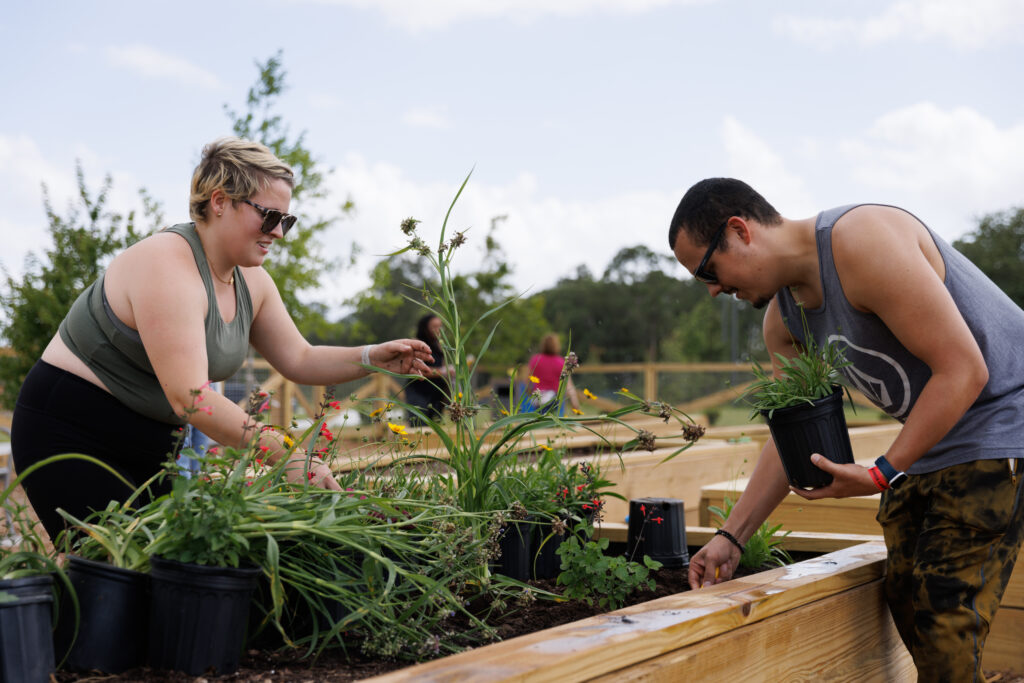
Putting it simply: our favorite ways to enjoy time outside are not typically sedentary, meaning we get more movement into our day without even trying.
The benefits to our health are clear: spending time in nature leads to increased physical fitness, reduction in chronic disease and improved cardiovascular health. A study by the USDA Forest Service shows that regular exposure to green spaces can lower blood pressure, decrease the risk of obesity and improve respiratory health as well. Being in the sunshine (with proper skin protection, of course), also improves our vitamin D levels, which is essential for healthy bones and immune systems.
Mental Health Benefits: Feeling Grounded
In addition to the physical benefits of time in the great outdoors, studies also suggest that this time spent outside makes us feel better, too. Immersion in natural landscapes and fresh air has been shown to significantly reduce stress, anxiety and depression symptoms. Given these findings, this area of study has continued to grow and become known as “ecopsychology.” Newer research in this field has suggested that immersion in nature helps to relieve mental fatigue and restores attention span.
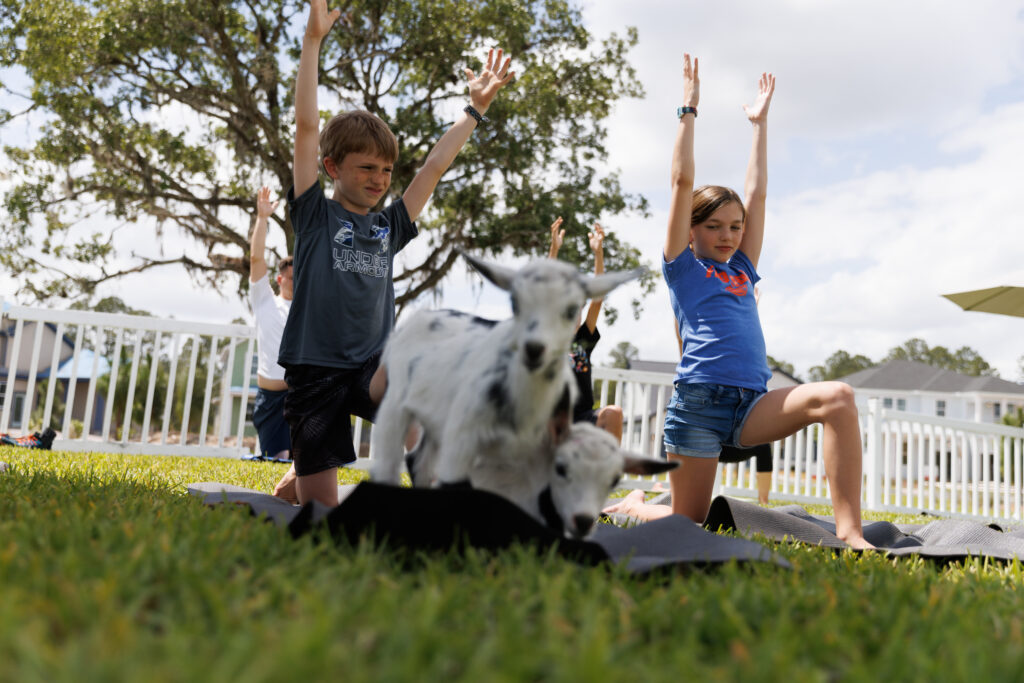
Being outside can also have a calming effect on our minds, promoting relaxation, tranquility, and grounding. For many of us, nature is an escape from everyday demands and pressures, allowing us to disconnect from technology and other distractions. Instead, we can use time outside to reconnect with ourselves through mindfulness practices and reflection. Inviting friends and family to join us for outdoor activities is another great way to nurture our relationships.
All in all, enjoying nature boosts our overall mood and enhances our ability to rest and recharge.
Social Benefits: Natural Connections
Building community is important to us in Sunbridge, and being outside fosters a sense of friendship among people, whether they’re already acquainted or not. Parks, trails and recreational areas provide space for neighbors to come together and naturally connect. Picnics with family, team sports and community events in natural settings also promote a sense of belonging.

These relationships and social support networks are essential to feeling fulfilled as a human being. By engaging with the outdoors, we’re not only reaping mental and physical benefits, but we’re nurturing important social connections, too.
Whether you head outside every day for a quick walk at lunchtime or once your workday is done, spend the weekend lounging or playing on the beach, or just enjoy an al fresco meal with family and friends, breathing fresh open air and observing the beautiful natural surroundings can make you a healthier, happier person.
Ready to spend even more time outdoors? Click below to find a home in the naturehood.
 FIND A HOME
FIND A HOME
